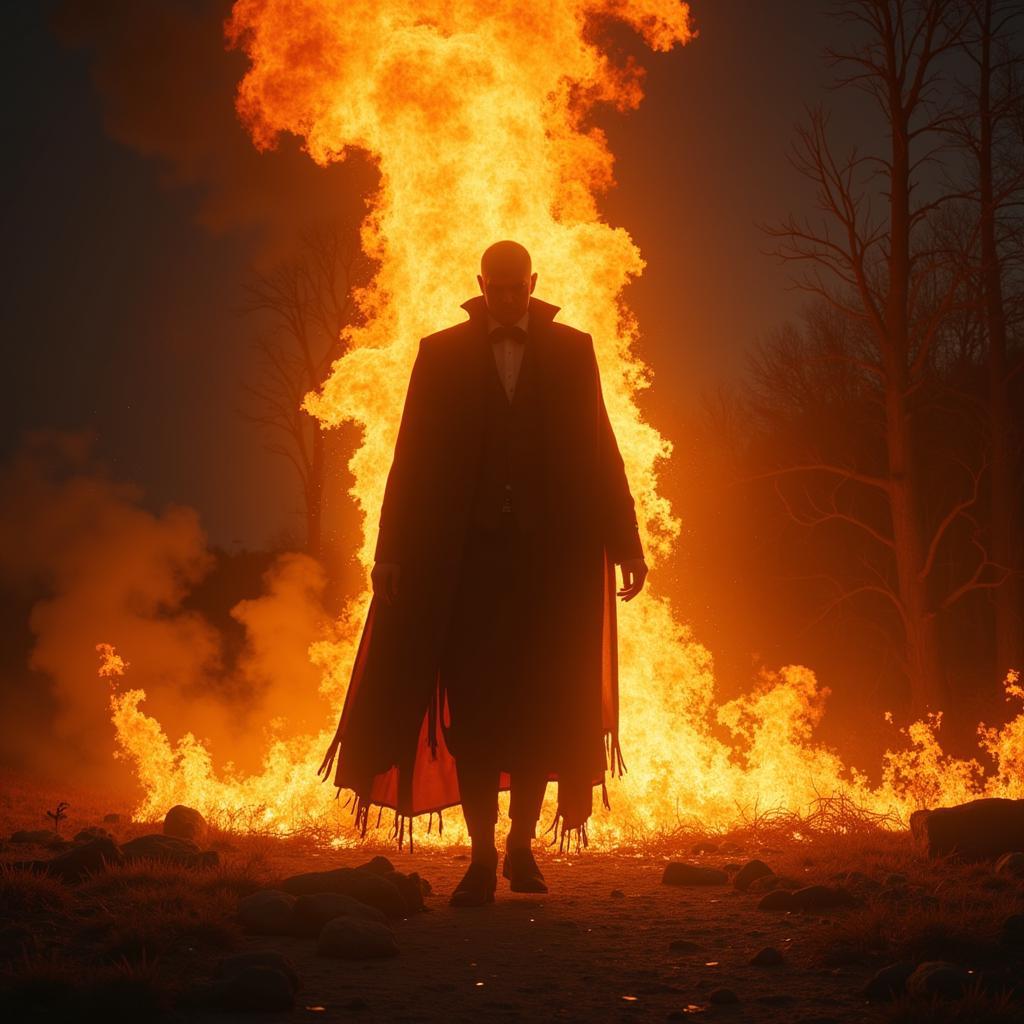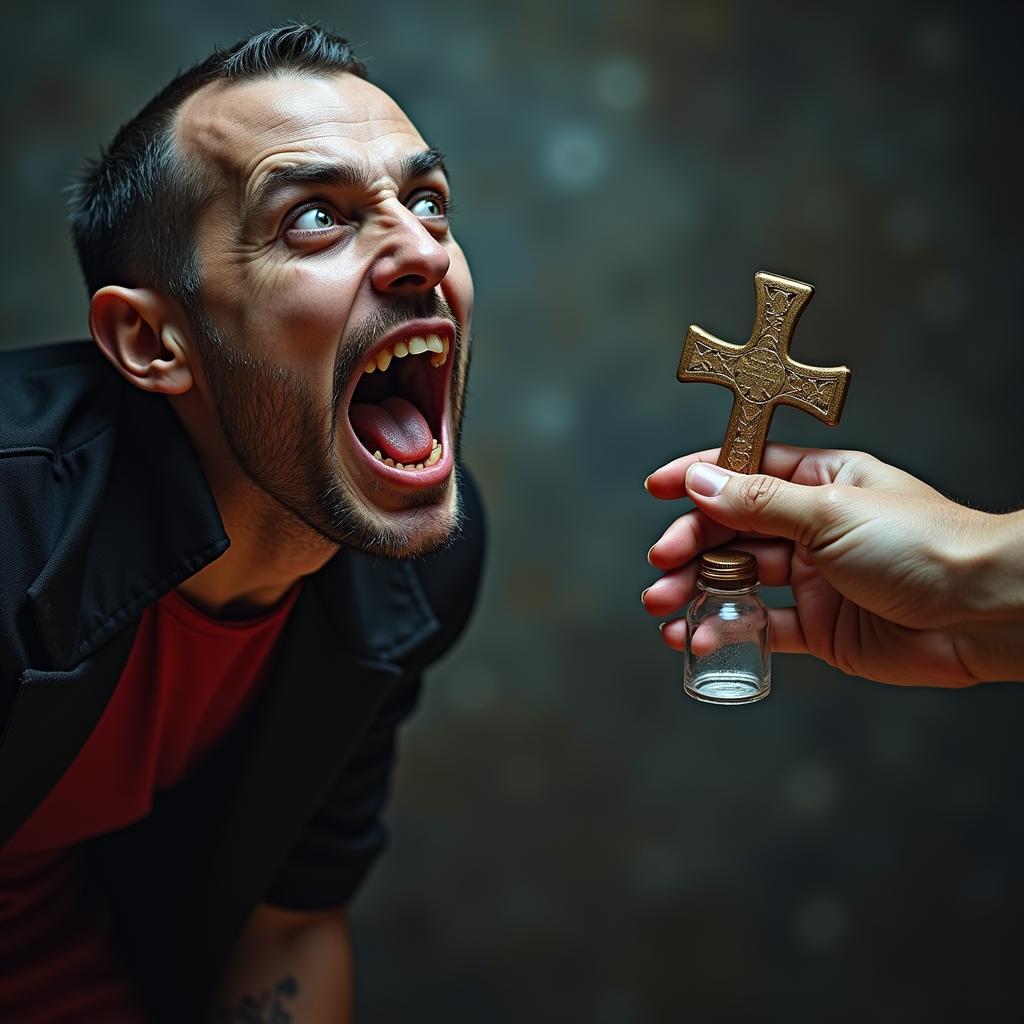Vampires have captivated the human imagination for centuries. Tales of these creatures of the night, with their supernatural powers and thirst for blood, have been passed down through generations, inspiring countless books, movies, and legends. But what exactly are the Weaknesses Of A Vampire? How much of what we know from popular culture holds true? This article delves into the lore and explores the vulnerabilities that plague these immortal beings.
The Classic Vulnerabilities: Separating Fact from Fiction
While specific weaknesses vary depending on the source, some vulnerabilities are almost universally acknowledged in vampire lore. These weaknesses often stem from ancient beliefs and superstitions, reflecting a deep-seated human fear of the dark and the unknown.
1. Sunlight: The Ultimate Bane of the Undead?
Perhaps the most iconic weakness of a vampire is their aversion to sunlight. In many depictions, exposure to direct sunlight can cause severe burns, even leading to instant combustion. This vulnerability is often attributed to the vampire’s undead nature, with sunlight representing life and vitality, forces that are anathema to their existence.
 Vampire Burning in Sunlight
Vampire Burning in Sunlight
However, some interpretations suggest that vampires might possess a degree of tolerance to sunlight, albeit with limitations. This variation adds a layer of complexity to the lore, allowing for different interpretations and creative storytelling.
2. Religious Artifacts: Symbols of Faith and Protection
Another common weakness stems from religious faith and sacred objects. Crucifixes, holy water, and consecrated ground are often portrayed as powerful deterrents against vampires. The effectiveness of these artifacts is often linked to the vampire’s origins as a being of darkness, inherently opposed to the divine.
The fear instilled by these symbols of faith highlights the clash between the sacred and the profane, a recurring theme in vampire lore. This conflict adds a moral dimension to the vampire myth, exploring themes of good versus evil and the struggle against temptation.
 Vampire Repelled by Religious Artifacts
Vampire Repelled by Religious Artifacts
3. Garlic and Herbs: Wards Against Evil
Garlic, with its pungent aroma and ancient medicinal properties, has long been associated with warding off evil spirits, including vampires. This belief likely stems from the herb’s antimicrobial properties, which might have been perceived as having supernatural qualities in ancient times.
Beyond garlic, various herbs and plants, like vervain and wolfsbane, are often cited as deterrents against these creatures of the night. These natural elements, often associated with purity and protection, offer a glimpse into the folklore and traditional beliefs surrounding vampires.
4. Invitation: A Matter of Consent
A unique aspect of vampire lore is the requirement of an invitation to enter a dwelling. This vulnerability suggests a respect for boundaries and a need for permission, perhaps a remnant of their former humanity. This aspect adds a layer of psychological intrigue to the vampire myth, emphasizing the importance of free will and consent even in the face of supernatural influence.
Beyond the Conventional: Exploring Other Vulnerabilities
While the classic weaknesses are well-known, many other vulnerabilities add depth and intrigue to the vampire mythos.
5. Stakes and Decapitation: Destroying the Physical Form
Physical destruction, often through a stake to the heart or decapitation, is a common method of dispatching vampires in folklore. This vulnerability highlights the importance of the physical body, even in an undead state, and emphasizes the finality of death, even for an immortal being.
 Vampire with Stake through Heart
Vampire with Stake through Heart
6. Fire: The Purifying Element
Fire, symbolizing purification and destruction, is often portrayed as a potent weapon against vampires. This vulnerability likely stems from the belief that fire could cleanse and banish evil spirits. The imagery of a vampire consumed by flames evokes a sense of finality and underscores the creature’s vulnerability to the forces of nature.
7. Running Water: A Barrier to Entry
In some traditions, running water is seen as a barrier that vampires cannot cross. This belief might be rooted in the symbolic association of water with life and purity, elements that are antithetical to the vampire’s undead nature. This vulnerability adds a geographical element to the lore, limiting the vampire’s movements and emphasizing their connection to darkness and stagnation.
The Human Element: Exploiting Emotional Weaknesses
Beyond physical vulnerabilities, vampires are often depicted as possessing emotional weaknesses that can be exploited. These weaknesses add a layer of psychological complexity to their character, making them more relatable and, in some ways, more human.
8. Love and Attachment: A Double-Edged Sword
Love and emotional attachments, while often seen as sources of strength, can also be significant weaknesses for vampires. The pain of lost love or the fear of harming those they care about can be used against them, highlighting the enduring power of human connection even in the face of supernatural powers.
9. Guilt and Remorse: Echoes of Humanity
Despite their monstrous nature, vampires are often depicted as grappling with guilt and remorse for their actions. This internal struggle suggests that a shred of their former humanity remains, tormenting them with the weight of their deeds. This vulnerability adds a tragic dimension to the vampire myth, exploring the themes of redemption and the consequences of immortality.
Conclusion: The Enduring Allure of the Vampire Myth
The weaknesses of a vampire are as diverse and multifaceted as the myths that surround them. From the classic vulnerabilities to sunlight and garlic to more complex emotional weaknesses, these vulnerabilities provide insights into the fears, beliefs, and values of the cultures that created them. While the specific weaknesses may vary, they all serve to humanize these creatures of the night, reminding us that even in immortality, there are limitations and consequences.





